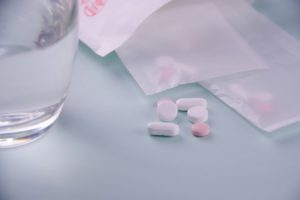2025.01.21
【Doctor-Supervised】What is Oxidative Stress!? Symptoms, Causes, and Tips for Reducing It
Oxidative stress is often mentioned as a culprit that increases the risk of diseases and accelerates aging. Known as the “rust of the body,” it is likened to how iron rusts and deteriorates over time.
Since oxidative stress does not visibly manifest on the surface, it is often overlooked. However, if you care about your health and beauty, adopting a lifestyle that minimizes oxidative stress is essential. To achieve this, understanding the mechanisms of oxidative stress, revising daily habits, and maintaining a balanced diet are crucial.
This article explains oxidative stress, its causes, and practical ways to reduce it for those looking to manage oxidative stress in their daily lives.

Oxidative stress refers to a condition where reactive oxygen species (ROS) (※1) exceed the body’s antioxidant defense system. The term “oxidative stress” is commonly used in English as well.
A portion of the oxygen humans intake is converted into reactive oxygen species such as hydrogen peroxide. While these reactive oxygen species play an essential role in enhancing immune function and fighting infections, excessive production or an overwhelmed antioxidant defense system allows ROS to accumulate, causing harm to the body.
The primary cause of oxidative stress is the excessive production of ROS.
It is estimated that a small percentage of the oxygen humans breathe is converted into ROS. These reactive oxygen species can damage essential cellular components such as DNA, proteins, and lipids. However, the human body is equipped with an antioxidant defense system to protect itself from these attacks.
As long as the production of ROS and the antioxidant defense system are balanced, the body remains protected, and ROS only target harmful substances. In such cases, ROS themselves do not directly harm the body.
However, when the antioxidant defense system fails, ROS levels rise, disrupting this balance and leading to damage to healthy cells.
Oxidative stress arises when the balance between ROS and the body’s antioxidant defense system is disrupted, causing an excess of ROS.
As long as humans breathe oxygen, ROS are constantly produced. These are highly reactive molecules that can oxidize other substances, making them potentially harmful when overproduced.
That said, ROS cannot and should not be entirely eliminated. The body uses ROS to kill bacteria and viruses and facilitate cellular communication, among other beneficial roles. The key issue is not their presence but whether their levels can be maintained within a range beneficial to the body.

Oxidative stress damages cells and impairs the functions of organs and tissues (such as proteins and DNA).
For instance, when low-density lipoprotein (LDL), responsible for transporting cholesterol in the bloodstream, is oxidized by oxidative stress, it gets engulfed by white blood cells. The resulting remnants accumulate in blood vessel walls, leading to atherosclerosis and increasing the risk of myocardial infarction.
Oxidative stress is directly or indirectly associated with a range of diseases, including cancer, diabetes, hypertension, allergic disorders, multi-organ failure, and retinopathy of prematurity.
Aging refers to the decline in physiological functions. One theory suggests that aging is caused by a predetermined number of cellular divisions (“program theory”), while another posits that ROS damage cells, accelerating aging (“reactive oxygen species theory”).
When oxidative stress levels are high, normal cells are attacked, causing aging symptoms such as muscle loss and decreased bodily functions at a faster rate than age-related changes alone. Aging accelerates particularly after the age of 40, as the body’s antioxidant defense system weakens, leading to a high oxidative stress state.
However, aging is a natural biological process, so reducing oxidative stress does not guarantee the complete prevention of aging.
Reference: Delaying Aging: Anti-Aging Explained Through the Lens of Oxidative Stress (Gifu University Antioxidant Research Institute)
Approximately 60% (※2) of cancers are believed to result from environmental factors such as UV exposure and smoking.
ROS produced by these environmental factors damage DNA. Although the body has mechanisms to repair such damage or eliminate affected cells, sustained and intense attacks by ROS can overwhelm these defenses, initiating cancer development.
ROS-related oxidative stress has been reported to contribute to various cancers, including prostate, colorectal, gastric, lung, and ovarian cancers. Thus, an excess of ROS in the body increases the risk of cancer.
※2 Reference: Reactive Oxygen Species and Human Health (Shu Sugita)

Reducing oxidative stress involves minimizing excessive ROS production and enhancing the body’s antioxidant defense system.
Since ROS are naturally produced when oxygen is consumed and serve beneficial functions, eliminating them entirely is unnecessary. Maintaining balance and avoiding activities that cause excessive ROS production can prevent high oxidative stress levels.